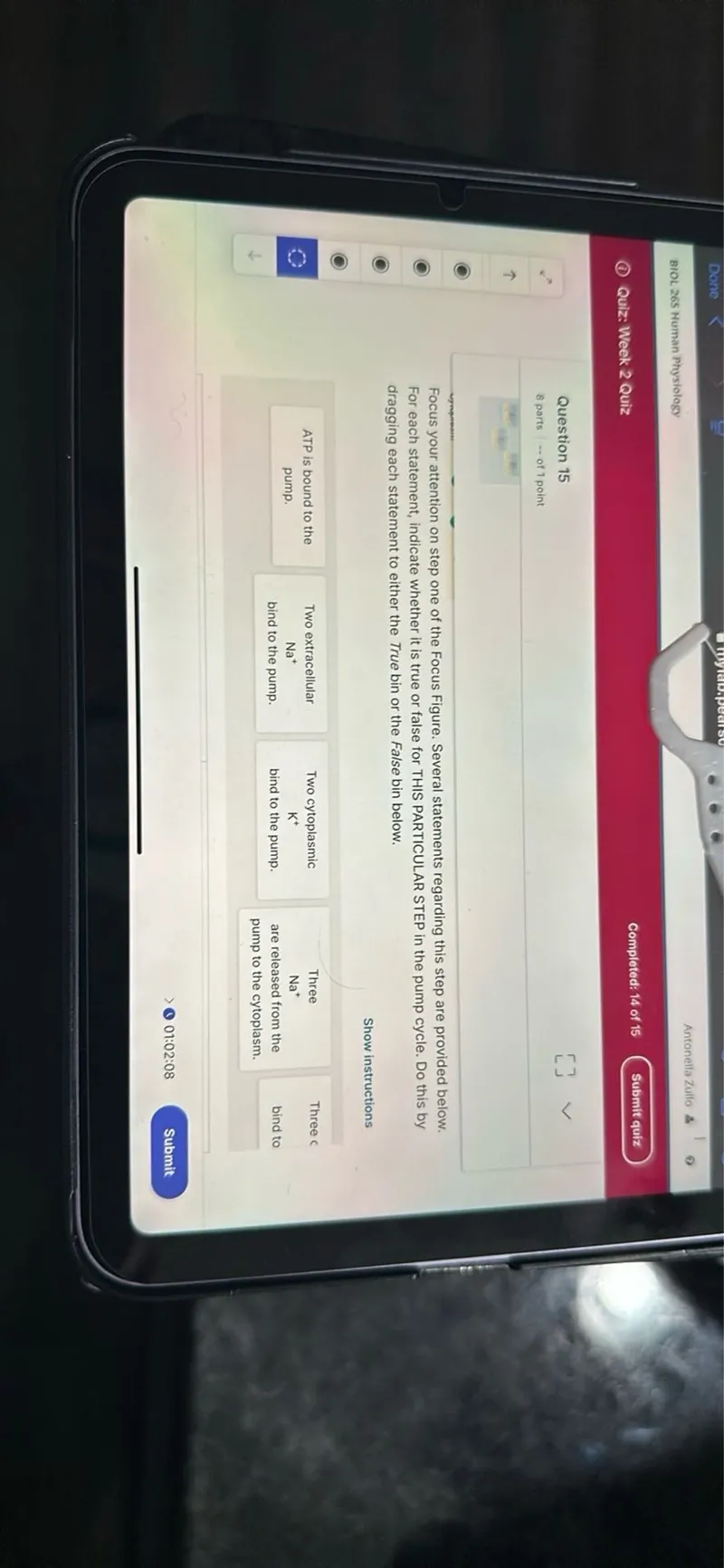Questions: Focus your attention on step one of the Focus Figure. Several statements regarding this step are provided below. For each statement, indicate whether it is true or false for THIS PARTICULAR STEP in the pump cycle. Do this by dragging each statement to either the True bin or the False bin below. ATP is bound to the Two extracellular Two cytoplasmic Three Na+ bind to the pump. are released from the bind to bind to the pump. pump to the cytoplasm.

Transcript text: Focus your attention on step one of the Focus Figure. Several statements regarding this step are provided below. For each statement, indicate whether it is true or false for THIS PARTICULAR STEP in the pump cycle. Do this by dragging each statement to either the True bin or the False bin below.
ATP is bound to the
Two extracellular
Two cytoplasmic
Three
$\mathrm{Na}^{+}$ bind to the pump. are released from the bind to bind to the pump. pump to the cytoplasm.





